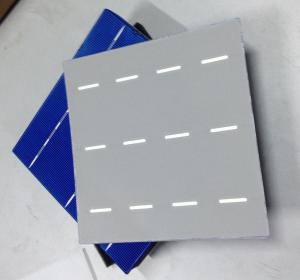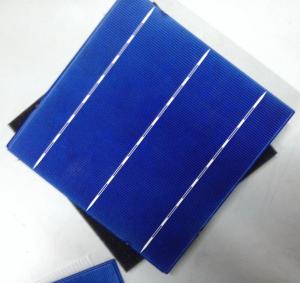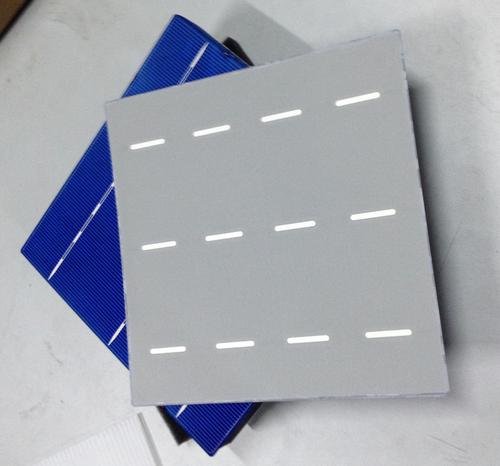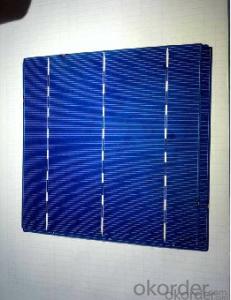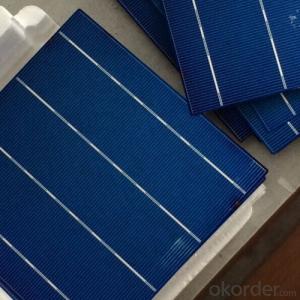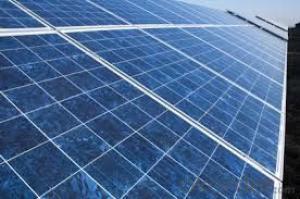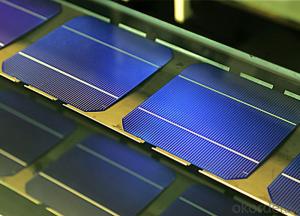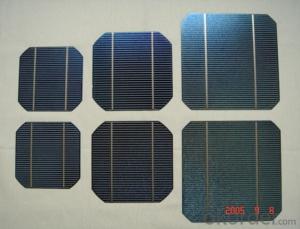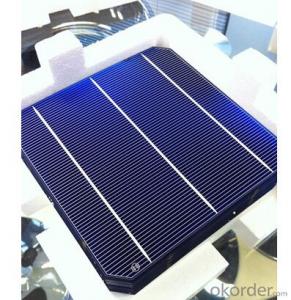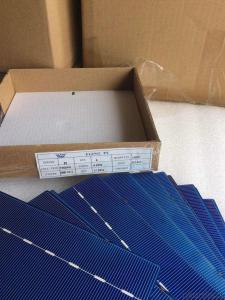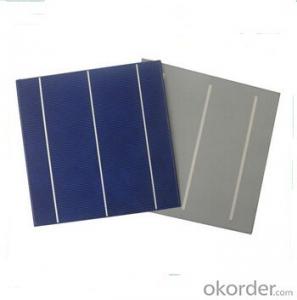Flexible Silicon Solar Cells - World-Beating Efficiency, 25-Year Lifespan, 17.4% Efficiency
- Loading Port:
- Shanghai
- Payment Terms:
- TT OR LC
- Min Order Qty:
- 1000 pc
- Supply Capability:
- 5000000 pc/month
OKorder Service Pledge
OKorder Financial Service
You Might Also Like
Brief Introduction of Solar Cells
A solar cell, is an electrical device that converts the energy of light directly into electricity by the photovoltaic effect, which is a physical and chemical phenomenon. It is a form of photoelectric cell, defined as a device whose electrical characteristics, such as current, voltage, or resistance, vary when exposed to light. Solar cells are the building blocks of photovoltaic modules, otherwise known as solar panels.
Introduction of our Company
We are a NASDAQ-listed leading manufacturer of solar cells and modules and closely affiliated with the renowned China Electric Equipment Group, which has long established strategic partnerships with the KME group and DuPont. Our group is one of the top two manufacturers of electrical transformers in China and also manufactures advanced composite materials used in the construction of aircraft and other transportations systems. We have extensive experience in the photovoltaic industry and is known for outstanding innovation, efficiency and quality. Initially, we were focused solely on cell manufacturing and supplied leading European solar module manufacturers with cells. Today, we has added a solar module production capacity of 1.2 GW and has sold over 1.4 GW of modules.
We work tirelessly to improve the efficiency of our photovoltaic cells and modules as well as our system costs to provide our customers with world-class solar solutions and to ensure competitiveness of PV with conventional sources of electricity. With a 10-year product and a 25-year linear performance guarantee, backed by leading insurance companies, we are one of the industry leaders.
Specifications of Polycrystalline Solar Cells
Format : 156 mm × 156 mm ± 0.5 mm
Thickness: 210 μm ±40 μm
Front (-) : 1.5mm bus bars (silver),blue anti-reflection coating (silicon nitride)
Back (+) : 2.5mm wide soldering pads (silver) back surface field (aluminium)
Efficiency (%) | Pmpp (W) | Umpp (V) | Impp (A) | Voc (V) | Isc (A) |
18.00% | 4.38 | 0.528 | 8.291 | 0.631 | 8.869 |
17.80% | 4.33 | 0.525 | 8.252 | 0.629 | 8.821 |
17.60% | 4.29 | 0.532 | 8.053 | 0.633 | 8.541 |
17.40% | 4.23 | 0.528 | 8.092 | 0.624 | 8.632 |
17.20% | 4.19 | 0.524 | 7.992 | 0.62 | 8.458 |
17.00% | 4.14 | 0.52 | 7.972 | 0.623 | 8.5 |
Advantage of Polycrystalline Solar Cells
1. Tire-1 Solar Cells’ Manufacturer Quality Guarantee. With a complete and sophisticated quality government system, our Quality Management have arrived world’s leading place. Customer can receive Tire-1 Cells Maker’s Quality Standard Products.
2. Trusted Warranty. We can supply trusted after-sales service to our customer. If our cells are found not in conformity to the specification of manufacturer, or should the inspected quantity found in shortage, or should the packing found damaged, the buyer has the right to claim to the seller. The claim, if any, should be presented to seller within 30 days after cargo's arrival date to the port, together with related inspection report and photos issued and provided by a reputable independent surveyor such as SGS.
3. World’s Leading Manufacturer Equipment. We imported the newest and leading production equipment from abroad. Advanced equipment can guarantee the stable quality of cells. Auto production line can also save labor cost which will further cut our production cost.
4. Bulk supply: With the production capacity of 500MW, we can produce large quantity every month. This can satisfy most customer requirement.
Usage of Polycrystalline Solar Cells
Solar cells are often electrically connected and encapsulated as a module. Photovoltaic modules often have a sheet of glass on the front (sun up) side, allowing light to pass while protecting the semiconductor wafers from abrasion and impact due to wind-driven debris, rain, hail, etc. Solar cells are also usually connected in series in modules, creating an additive voltage. Connecting cells in parallel will yield a higher current; our solar cells have passed IEC Certification. With high and stable quality, our cells can greatly improve the performance of Solar Modules.
Applications of Polycrystalline Solar Cells
Assemblies of photovoltaic cells are used to make solar modules which generate electrical power from sunlight, as distinguished from a "solar module" or "solar panel". A solar array generates solar power using solar energy.
Packaging & Delivery of Polycrystalline Solar Cells
Carton Box Package and Deliver by air. It should be noticed that it should be avoid of water, sunshine and moist.
Factory Picture of Solar Cells
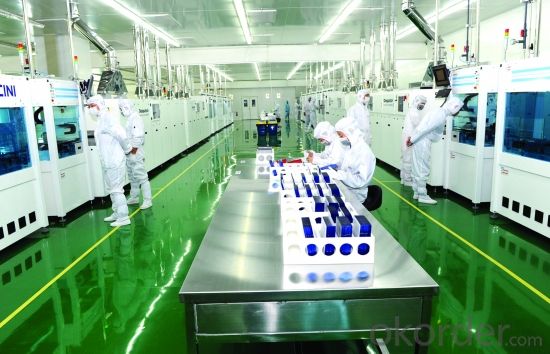
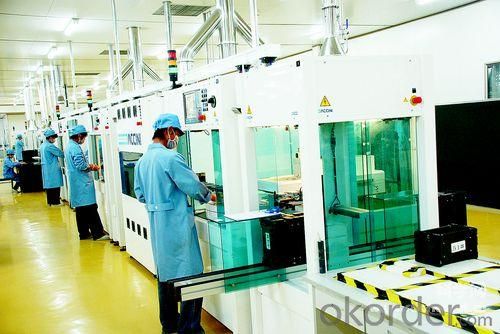
Package of Solar Cells
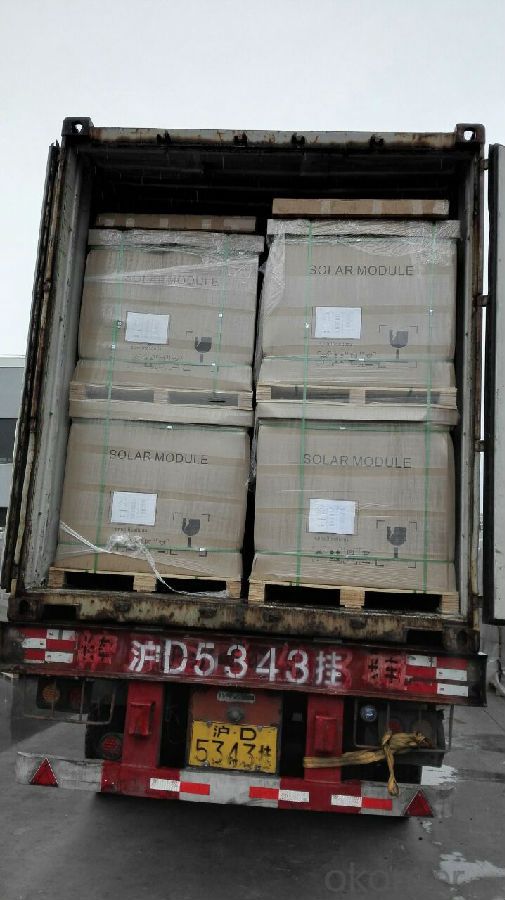
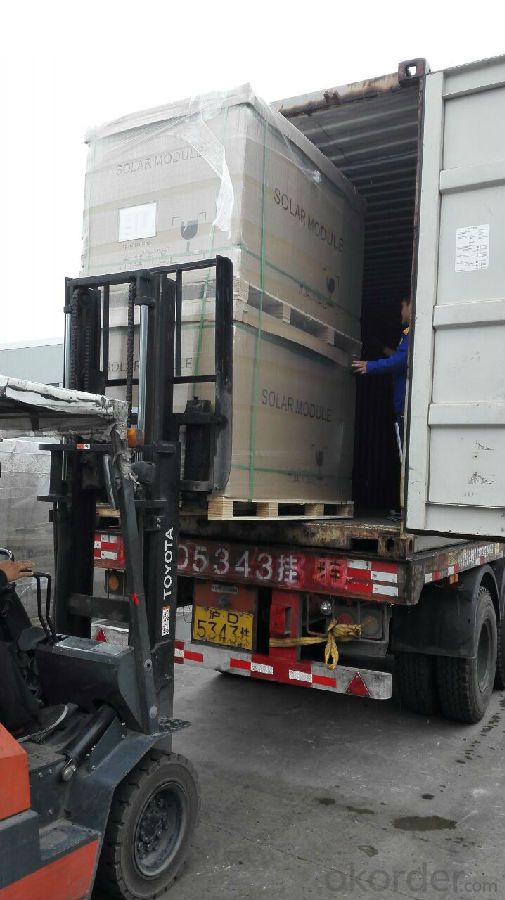
FAQ
We have organized several common questions for our clients,may help you sincerely:
1. What’s price per watt?
A: It’s depends on the quantity, delivery date and payment terms of the order. We can talk further about the detail price issue. Our products is high quality with lower price level.
2. Can you tell me the parameter of your solar cells?
We have different series of cells with different power output, both from c-si to a-si. Please take our specification sheet for your reference.
3. How do you pack your products?
We have rich experience on how to pack the panels to make sure the safety on shipment when it arrives at the destination.
4. Can you do OEM for us?
Yes, we can.
5. How long can we receive the product after purchase?
In the purchase of product within three working days, We will arrange the factory delivery as soon as possible. The perfect time of receiving is related to the state and position of customers. Commonly 7 to 10 working days can be served.
- Q: How do solar cells perform in regions with high levels of air pollution?
- Solar cells tend to perform less efficiently in regions with high levels of air pollution. The particles and pollutants in the air can block sunlight from reaching the solar cells, reducing their ability to generate electricity. Additionally, air pollution can accumulate on the surface of the solar panels, further reducing their efficiency. Regular cleaning and maintenance of the solar panels can help mitigate the impact of air pollution on their performance.
- Q: What is the impact of electromagnetic interference on solar cell performance?
- Electromagnetic interference can have a significant impact on solar cell performance. It can disrupt the flow of electrons within the solar cell, leading to reduced efficiency and power output. This interference can be caused by various sources such as power lines, radio waves, or nearby electronic devices. To mitigate its effects, proper shielding and grounding techniques need to be implemented to minimize electromagnetic interference and maximize the performance of solar cells.
- Q: Can solar cells be used in underwater applications?
- Yes, solar cells can be used in underwater applications, but they require special design considerations.
- Q: Can solar cells be used in water?
- Yes, solar cells can be used in water, but they must be specifically designed for underwater use to ensure their functionality and durability.
- Q: Where can I get a competitive price for this solar cell? The 2bb/3bb polycrystalline solar cell panel?
- We are a solar cell company based in Shandong, and we sell 2BB/3BB Polycrystalline solar cells/multi-solar cells.
- Q: Can solar cells be used for powering security systems?
- Yes, solar cells can be used for powering security systems. Solar cells convert sunlight into electricity, which can be used to power various devices including security systems. This renewable energy source is reliable, cost-effective, and environmentally friendly, making it a suitable option for powering security systems in remote locations or areas with limited access to electricity grids.
- Q: Can solar cells be used in desert regions?
- Yes, solar cells can be used in desert regions. In fact, desert regions are ideal for solar energy generation due to their high levels of solar radiation and clear skies. The availability of ample sunlight and vast open spaces make deserts well-suited for large-scale solar power installations, such as solar farms or concentrated solar power plants. Additionally, the arid climate in deserts minimizes the risk of cloud cover or rain interfering with solar energy production.
- Q: What is the impact of leaf litter on solar cell performance?
- Leaf litter can have a negative impact on solar cell performance as it can block sunlight from reaching the cells, reducing their efficiency. Additionally, if the litter accumulates and covers the cells, it can hinder their ability to convert light into electricity. Regular cleaning and maintenance are essential to ensure optimal solar cell performance.
- Q: Can solar cells be used in disaster relief efforts?
- Yes, solar cells can be used in disaster relief efforts. They are a reliable and sustainable source of energy that can provide electricity in areas affected by natural disasters, where power grids may be damaged or non-existent. Solar cells can be used to power emergency lighting, communication systems, medical equipment, and water purification systems, among other essential needs. Additionally, solar energy can be harnessed to charge mobile devices and provide a means of communication and access to information during these critical times. Overall, solar cells are a valuable tool in disaster relief efforts, offering a clean and renewable energy solution to support affected communities.
- Q: What is the role of tracking systems in solar cell installations?
- The role of tracking systems in solar cell installations is to optimize the efficiency and output of the solar panels by automatically adjusting their position and orientation throughout the day to maximize exposure to sunlight. This ensures that the panels are always facing the sun at the optimal angle, resulting in increased energy production and improved overall performance of the solar cell installation.
Send your message to us
Flexible Silicon Solar Cells - World-Beating Efficiency, 25-Year Lifespan, 17.4% Efficiency
- Loading Port:
- Shanghai
- Payment Terms:
- TT OR LC
- Min Order Qty:
- 1000 pc
- Supply Capability:
- 5000000 pc/month
OKorder Service Pledge
OKorder Financial Service
Similar products
Hot products
Hot Searches
Related keywords
